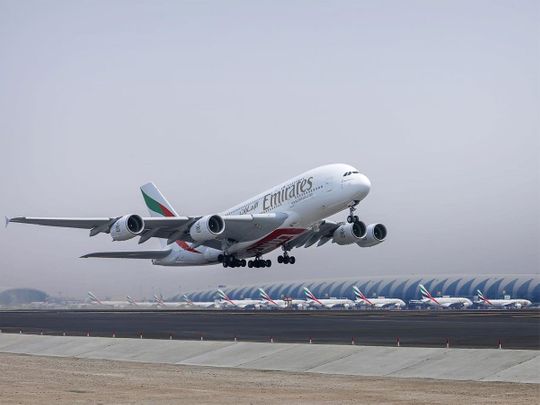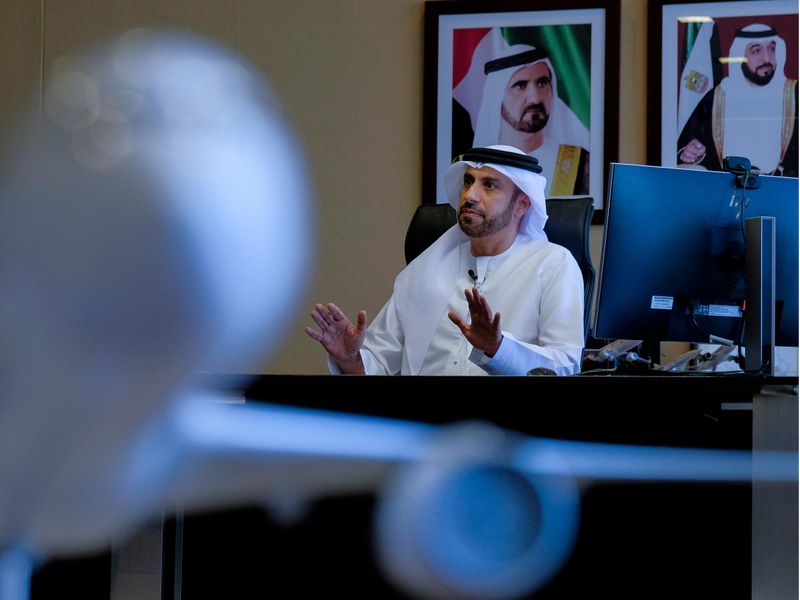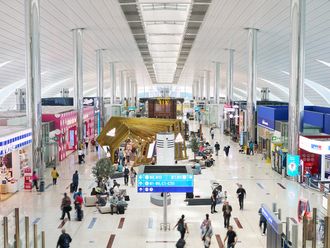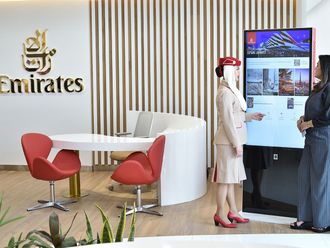
Dubai: Emirates airline will soon be reaching 100 per cent of its pre-pandemic network utilization as ‘demand is not slowing down from where we are today’, according to a top official.
“Our plan is to increase the frequencies to Asia, which is core in operating plan (for 2023),” said Adnan Kazim, Chief Commercial Officer of Emirates said in an interview to Gulf News, “In addition, we are focused on expansion into Australia and Europe.”
On travel demand, the airline is experiencing ‘positive responses’ from all the big feeder markets, including the UK, India, Pakistan, Germany, China and Australia. “That gives us a very optimistic view of the future,” said Kazim.
By December 2022, Emirates’ capacity had recovered to 80 per cent of its pre-pandemic levels, while services across its network had returned to 95 per cent of the pre-crisis levels.
This year, the airline plans to recover network and capacity levels to where they were pre-pandemic by increasing flights to countries with lower frequencies. Emirates, the world’s biggest operator of the Airbus A380, plans to achieve this by returning its entire fleet of the 118 super-jumbos into service. Currently, 85 of the A380 fleet are in operation. And all this while undergoing an ambitious $2 billion retrofit program for the fleet.

Recovery in China
As Emirates has more or less achieved total recovery of services to the Indian subcontinent, the airline stands to gain more with China opening up travel. Beijing opened borders that have been all but shut since the start of the COVID-19 pandemic on January 8.
“We used to operate 35 frequencies with all the A380s to three points in China - Guangzhou, Shanghai and Beijing - with an average double-daily operation,” said Kazim. “Currently, we are operating weekly flights to Guangzhou with a stopover in Bangkok.”
The layover in Thailand was introduced because of China’s COVID-19 protocols for cabin crew, which have now been eased. Thrice weekly direct flights from Guangzhou to Dubai are available after January 11. However, Economy class fares on this route are at a fairly steep Dh10,000 and over. Fares are expected to stabilize to normalize after flight frequencies are raised.
While initial demand from Chinese travellers into the UAE has been on the slower side, Kazim expects a pick up once more direct daily flights are reinstated, which should happen in a phased manner. “First, we will put back capacity to all three operation points in China and then increase frequencies,” he added. “At the moment, we’re working hard to respond to the growing demand as quickly as we can.
“We’re already witnessing a spike in demand with the limited capacity we’re operating today, and things will look completely different in the coming months. Demand should pick up towards the end of January because of the Chinese New Year.”
The airline achieved recovery of routes and capacities to the Indian subcontinent in the early days after the pandemic. “We have more or less recovered in the subcontinent. Core markets like India, Pakistan, Bangladesh, Sri Lanka, and the Maldives were among the places where we have gone back to almost 200 per cent recovery. This shows how important these markets are for Emirates in terms of the point-to-point and feeder traffic.”

New destinations
With Asia, Australia and Europe taking a big chunk of Emirates’ capacity ramp-up, the focus will also be on increasing frequencies to markets that have once-daily flights. “We hope to increase the double-daily frequencies to thrice-daily, for example, said Kazim. “This will strengthen our hub and further seamless connectivity within our network.”
Emirates also plans on increasing capacities in South Africa. “We are working to deploy double-daily operations to Cape Town and thrice daily flights to Johannesburg. We will also double the capacity to Durban.”







